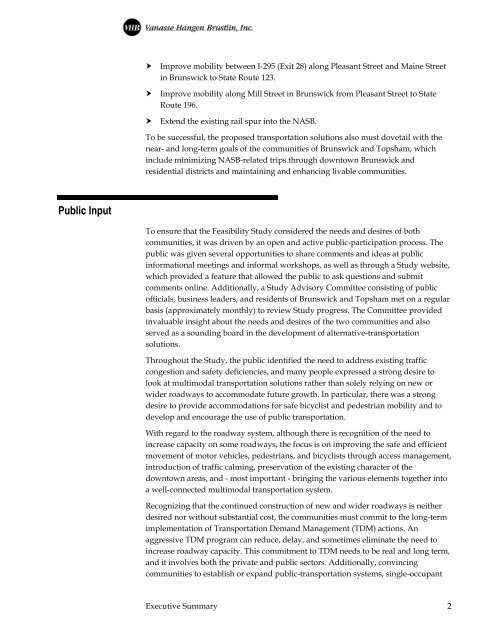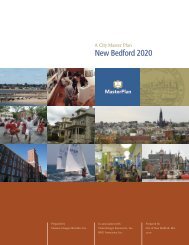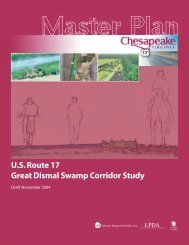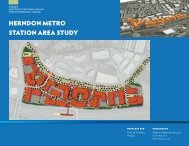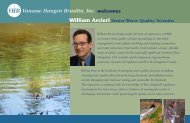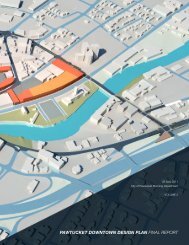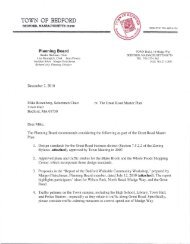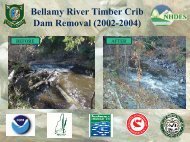Final Report - VHB.com
Final Report - VHB.com
Final Report - VHB.com
Create successful ePaper yourself
Turn your PDF publications into a flip-book with our unique Google optimized e-Paper software.
Improve mobility between I-295 (Exit 28) along Pleasant Street and Maine Street<br />
in Brunswick to State Route 123.<br />
Improve mobility along Mill Street in Brunswick from Pleasant Street to State<br />
Route 196.<br />
Extend the existing rail spur into the NASB.<br />
To be successful, the proposed transportation solutions also must dovetail with the<br />
near- and long-term goals of the <strong>com</strong>munities of Brunswick and Topsham, which<br />
include minimizing NASB-related trips through downtown Brunswick and<br />
residential districts and maintaining and enhancing livable <strong>com</strong>munities.<br />
Public Input<br />
To ensure that the Feasibility Study considered the needs and desires of both<br />
<strong>com</strong>munities, it was driven by an open and active public-participation process. The<br />
public was given several opportunities to share <strong>com</strong>ments and ideas at public<br />
informational meetings and informal workshops, as well as through a Study website,<br />
which provided a feature that allowed the public to ask questions and submit<br />
<strong>com</strong>ments online. Additionally, a Study Advisory Committee consisting of public<br />
officials, business leaders, and residents of Brunswick and Topsham met on a regular<br />
basis (approximately monthly) to review Study progress. The Committee provided<br />
invaluable insight about the needs and desires of the two <strong>com</strong>munities and also<br />
served as a sounding board in the development of alternative-transportation<br />
solutions.<br />
Throughout the Study, the public identified the need to address existing traffic<br />
congestion and safety deficiencies, and many people expressed a strong desire to<br />
look at multimodal transportation solutions rather than solely relying on new or<br />
wider roadways to ac<strong>com</strong>modate future growth. In particular, there was a strong<br />
desire to provide ac<strong>com</strong>modations for safe bicyclist and pedestrian mobility and to<br />
develop and encourage the use of public transportation.<br />
With regard to the roadway system, although there is recognition of the need to<br />
increase capacity on some roadways, the focus is on improving the safe and efficient<br />
movement of motor vehicles, pedestrians, and bicyclists through access management,<br />
introduction of traffic calming, preservation of the existing character of the<br />
downtown areas, and - most important - bringing the various elements together into<br />
a well-connected multimodal transportation system.<br />
Recognizing that the continued construction of new and wider roadways is neither<br />
desired nor without substantial cost, the <strong>com</strong>munities must <strong>com</strong>mit to the long-term<br />
implementation of Transportation Demand Management (TDM) actions. An<br />
aggressive TDM program can reduce, delay, and sometimes eliminate the need to<br />
increase roadway capacity. This <strong>com</strong>mitment to TDM needs to be real and long term,<br />
and it involves both the private and public sectors. Additionally, convincing<br />
<strong>com</strong>munities to establish or expand public-transportation systems, single-occupant<br />
Executive Summary 2


